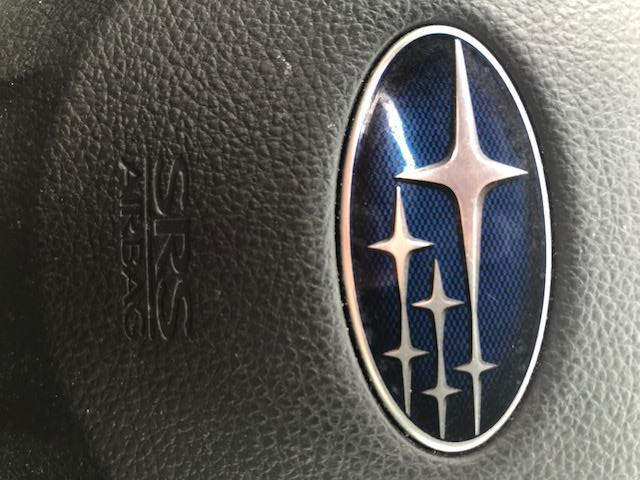Diagnosing car problems can be complicated
Your automobile is likely the most complex piece of machinery that you own. Having been an automotive technician for over 45 years now, I feel as if I know less than ever about cars, but I am much wiser.
I used to think I knew it all but now, not so much; I guess that’s called maturity. Cars are more complex than ever, what with high-end vehicles operating with more computer code then the Boing 787 Dreamliner.
The most difficult concept for customers to understand is that it’s very difficult for auto technicians to diagnose and repair today’s vehicles. I had a chat with an employee of the Lane Regional Air Protection Agency (LRAPA) about On Board Diagnostics 2 (OBD2) about reading the code. It’s a common misconception that this code reader diagnoses what’s wrong with a car. Not True. Most times the given code is just a starting point for diagnosis. We spend more time learning about codes than any other subject.
Another challenging concept for customers to understand is that many automobile parts poorly engineered. In any automobile shop, the technicians only can repair such poor design, not reengineering it. The inherent weakness of part remains even after a repair. Case in point, a very popular vehicle’s engine has an engineering design flaw.
The head gaskets leak in what I call a patterned failure. I was factory trained on these vehicles in the 1970s; I replaced many head gaskets then and continue to do so now. Where the two masses of aluminum (one the engine block, the other the cylinder head) meet, they are sealed by head gasket. These two masses of aluminum have different rates of expansion, and so the head gasket has to “slip” as these two parts heat and cool. It’s the number of heating and cooling cycles (not the vehicle’s mileage) that eventually cause the head gasket to start leaking oil.
The hard part for customers to understand is that technicians cannot fix a bad design. We can use the best parts and the best labor practices, but can’t change the design. And so, with this particular vehicle, it’s just a matter of time before the head gaskets leaks again.
Just about all vehicles have some poor engineering and/or assembly, which I called patterned failures. Most manufactures of vehicles have more than 500 different suppliers and costs are always a factor.
 The Takata air bag, for one, has drawn attention worldwide for its poor design. Many auto manufacturers bought Takata’s lower priced air bag, despite some questions about stability of the propellant it uses. Price won.
The Takata air bag, for one, has drawn attention worldwide for its poor design. Many auto manufacturers bought Takata’s lower priced air bag, despite some questions about stability of the propellant it uses. Price won.
It’s important that customers understand that the auto shop is not to blame for design flaws. Regarding the head gasket problem, for example, a very upset customer has been blaming my shop for the design flaw when the head gaskets starting leaking oil again five years after they’d been replaced at 47,000 miles. Customers are looking for someone to blame and often the shop or dealer is the easiest to get upset with.
Understanding, please. Don’t blame the shop or dealer for problems on pattered failures and problems these failures create. It’s not the shop’s fault.
Checklist for summer road trips.
Fill your fuel tank before leaving. During summer driving season, it’s a good idea to fuel up when the tank is 1/8 full. In most cars, the fuel lubricates and cools the fuel pump.
Take care of the driver. The driver should be fully rested, with breaks every 3 hours. Tires should be in good shape with correct tire pressure. Only check tire pressure on “cool” tires. Find vehicle manufacturer recommended tire pressures listed on the driver’s side door jamb or in the owner’s manual, not on the tire.
Check the oil level before you start the vehicle or after 3 minutes of sitting on a warm engine. The worst time to check oil is to start it cold, shut the engine off and then check the oil. The oil is thicker and wouldn't’t have the chance to return to the oil pan.
Monitor the temperature gauge while driving. Overheating an engine causes major engine damage. Never check the coolant on a hot engine, opening the cap could cause the coolant to boil causing a major geyser, burning the people around.
If you do break down, pull as far off the road as possible and set the emergency flashers. If you’re changing a tire, be careful. Freeway traffic is very fast and dangerous it’s a good idea to have a spotter watching traffic.
Travel with a cell phone so you can call for help. But keep the cell phone well out of reach so as to avoid being distracted by the phone while driving
One last thing: expect to pay more for oil services; we have seen three price increases already this year.
Tip from George
Keeping the windshield clean on both sides increases vision. As the hot sun hits the interior of your vehicle, some gases are released which settles on the inside of the windshield, bugs and other debris on the outside accumulate when driving. When driving into the sun, these can dramatically reduce vision.